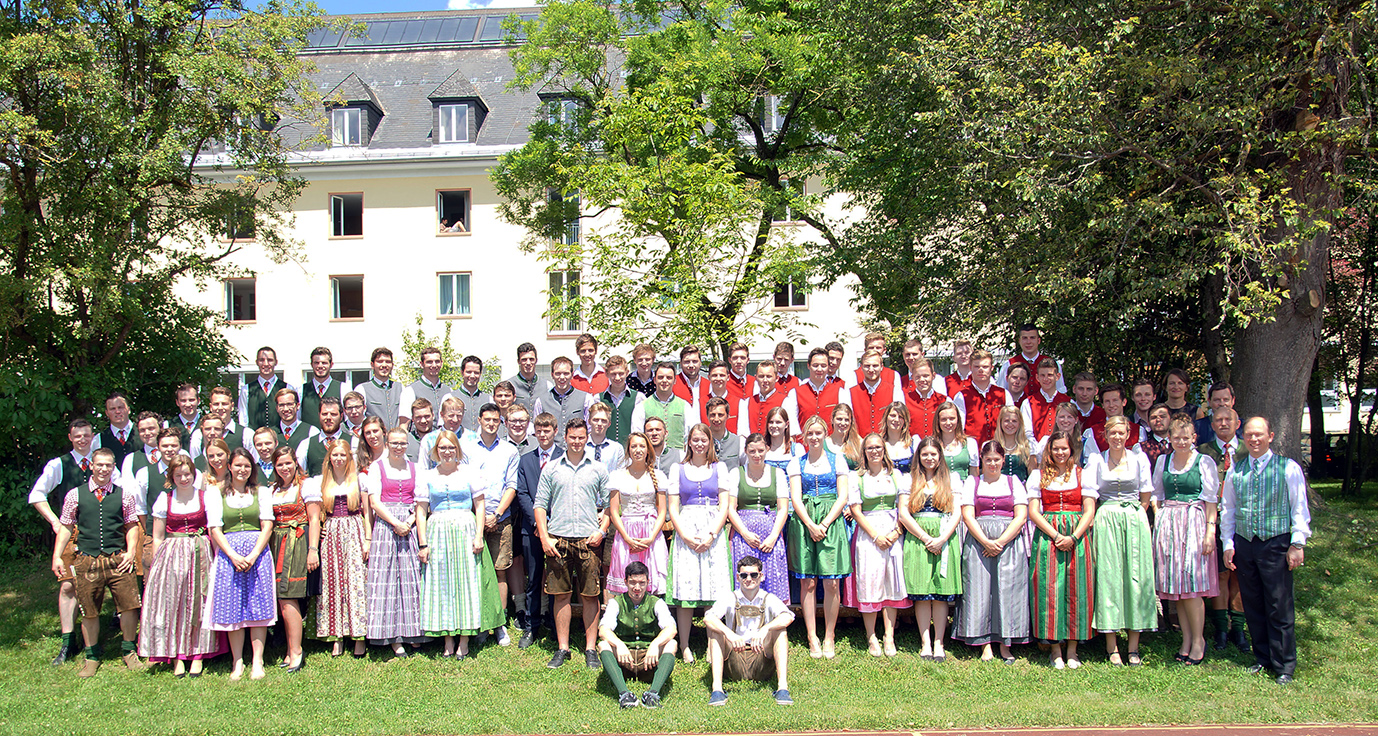Therefore, in the school year 1947/1948 in the traditional Benedictine monastery of St. Peter in Salzburg under the direction of Dr. Ladislaus Hula set up a two-year course in alpine agriculture for farmers and advisors, the teaching of which began on April 15, 1947 and whose graduates took the first matriculation examination on May 18, 1949. On February 21, 1948, the three-year course was officially opened in the village of Grins near Landeck, with DI Heinrich Putz from the Tyrolean state government entrusted with its management. As early as February 1949, the school was moved to the empty “Hotel Post” in Seefeld in Tyrol after the envisaged possibility of moving to the Cistercian monastery in Stams could not be realized, and DI Alphons Kromer took over the management. On January 1, 1950, DI Krommer was appointed Direktor in Wieselburg and DI Edmund Lerner took over the management of the Seefeld school. As part of the “Marshall Plan” or ERP, a program of the United States of America to promote democracy and a market economy in the countries of Europe devastated by the world war, the Seefeld Agricultural School was also to be enlarged and reequipped. It soon became clear that the hotel building was not suitable for extensive school operations. National Council member Johann Pötsch from Raumberg and economist Franz Thoma from Gröbming, who was Minister of Agriculture from 1952 to 1959, ensured that Raumberg was considered as the new location for the ERP school. In 1954, the Republic of Austria bought the land required for building the school, which began in 1955 according to plans by the Styrian state government. - It is probably not just a coincidence that DI Josef Riegler, as a Raumberg graduate, developed the idea of the “Global Marshall Plan”, which will be an education-based, ecologically, economically and socially well-balanced guideline for human development. Our school itself is an example of development cooperation through education! With the Stainach rural cooperative, the secondary school in Raumberg and the agricultural research institute relocated from Admont to Gumpenstein Castle, exactly what is now referred to in regional development as a “cluster” was to be created in the Styrian Ennstal. So the school changed its location once again and for the last time. In November 1956, 180 students and their teachers under Direktor DI Edmund Lerner moved into the new school building, which was built in just two years. On November 24, 1956, the opening of our school building was celebrated with joy for the future.

History of the Raumberg School
- Home
- School
- About Us
- School archive
- History of the Raumberg School





